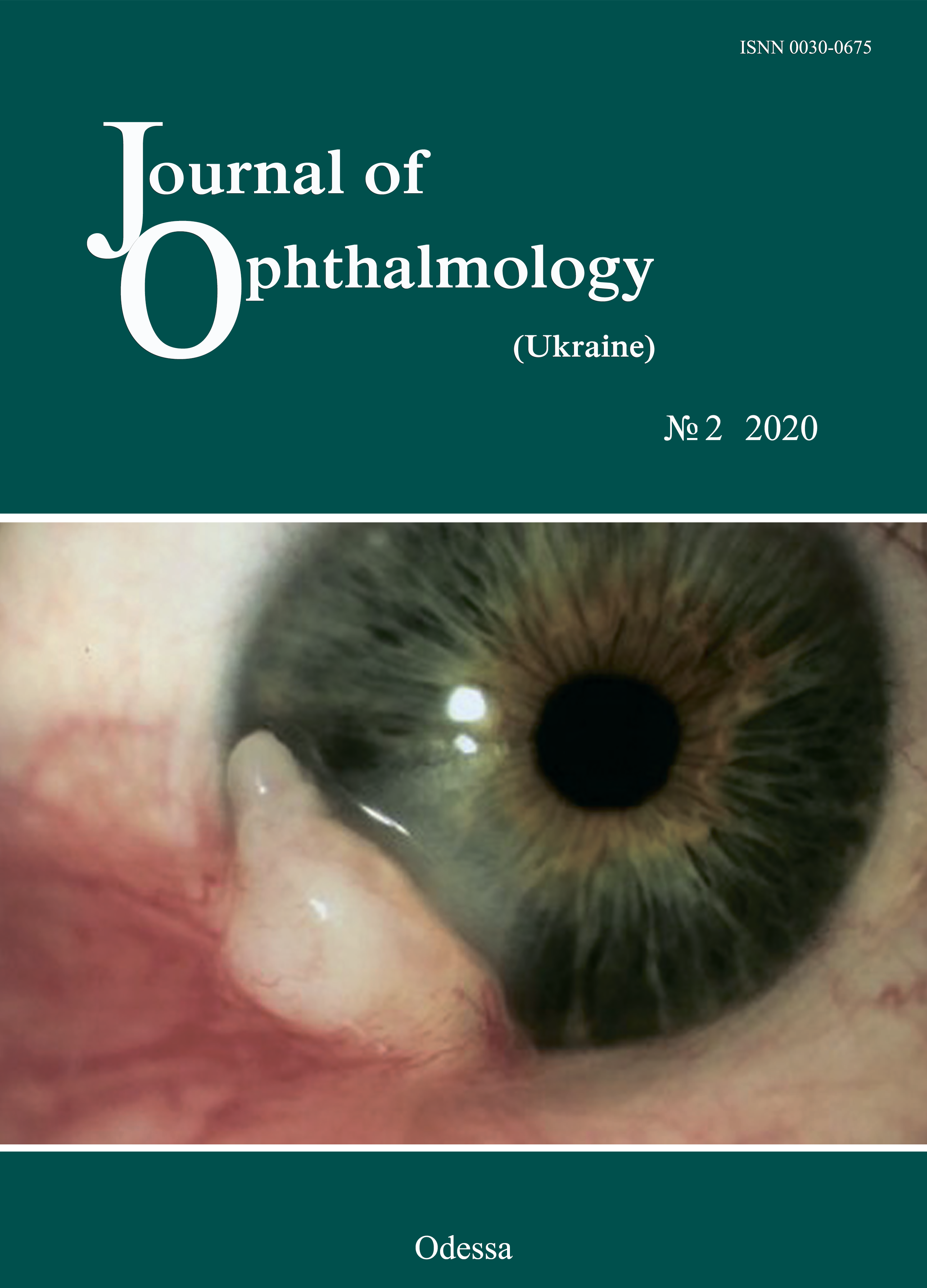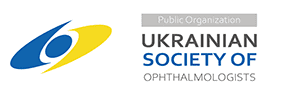Developing the inter-role conflict scale for eye-care workers
DOI:
https://doi.org/10.31288/oftalmolzh202027986Keywords:
inter-role conflict, stress, psychometric scale, ophthalmologistsAbstract
Background: Eye care workers are highly prone to the risk of psychological problems due to emotional demands of job and high stress loads. Because inter-role conflicts act as stress load factor, it is important to develop psychometrically adapted psychodiagnostic instruments for detecting them.
Purpose: To develop a Ukrainian version of the psychometric scale as a tool for measuring inter-role conflicts for eye care workers, to psychometrically analyze it, and to estimate its relationships with stress reactions.
Material and Methods: The study sample consisted of the eye care workers from the Filatov institute. Two hundred and eleven eye care workers were requested to respond to relevant questions. The response rate was 85.8% (181/211). The 181 responders included 99 nursing staff members and 82 ophthalmologists. The adapted version of the 1996 Netemeyer’s et al Work-Family Conflict and Family-Work Conflict Scales and the Stress Reaction Inventory for eye care workers designed by Ukrainian researchers, Tsekhmister, Daniliuk, Rodina, Biron, and Semeniuk, were used in the study.
Results: The Inter-role Conflict Scale was developed by adapting the Netemeyer’s et al questionnaire. The modified version of the scale is comprised of the two subscales describing two forms of inter-role conflicts, Work-Family Conflict (WFC) and Family-Work Conflict (FWC); these subscales were found to have high internal consistency and test-retest reliability. The two-factor scale model was verified by a confirmatory factor analysis. The two forms of inter-role conflicts were found to be statistically more severe in the physician staff than in the nursing staff. The test norms were developed and presented using the quartile scale, as long as the sample was representative. Therefore, the adapted Ukrainian-language version of the Inter-role Conflict Scale for eye care workers showed evidence of internal consistency and construct validity.
References
1.Weiner IB, Borman WC, Ilgen DR, Klimoski RJ (Eds.). Handbook of psychology. V. 12. Industrial and organizational psychology. NJ, Hoboken: John Wiley & Sons, Inc; 2003. https://doi.org/10.1002/0471264385.wei1201
2.Fuss I, N?bling M, Hasselhorn HM, Schwappach D, Rieger MA. Working conditions and Work-Family Conflict in German hospital physicians: psychosocial and organisational predictors and consequences. BMC Public Health. 2008 Oct 7;8:353.https://doi.org/10.1186/1471-2458-8-353
3.Kleiner S, Wallace JE. Oncologist burnout and compassion fatigue: investigating time pressure at work as a predictor and the mediating role of work-family conflict. BMC Health Serv Res. 2017; 17: 639.https://doi.org/10.1186/s12913-017-2581-9
4.Dyrbye LN, Shanafelt TD, Balch CM, Satele D, Sloan J, Freischlag J. Relationship between work-home conflicts and burnout among American surgeons: a comparison by sex. Arch Surg. 2011; 146(2):211-7.https://doi.org/10.1001/archsurg.2010.310
5.Viviers S, Lachance L, Maranda MF, M?nard C. Burnout, psychological distress, and overwork: The case of Quebec's ophthalmologists. Canadian J Ophthalmol. 2008 Oct;43(5):535-46.https://doi.org/10.3129/i08-132
6.Nair AG, Jain P, Agarwal A, Jain V. Work satisfaction, burnout and gender-based inequalities among ophthalmologists in India: A survey. Work. 2017;56(2):221-8.https://doi.org/10.3233/WOR-172488
7.Saurabh K, Sarkar K, Roy R, Majumder PD. Personal and practice profile of male and female ophthalmologists in India. Indian J Ophthalmol. 2015 Jun;63(6):482-6.https://doi.org/10.4103/0301-4738.162579
8.Netemeyer RG, Boles JS, McMurrian R. Development and Validation of Work-Family Conflict and Family-Work Conflict Scales. J Appl Psychol. 1996;81(4):400-10.https://doi.org/10.1037/0021-9010.81.4.400
9.Campbell D. [Models of experiments in social psychology and applied researches]. St. Petersburg: Socialno-psikhologicheskii tsentr. 1996. Russian.
10.Tsekhmister IV, Daniliuk IV, Rodina NV, Biron BV, Semeniuk NS. Developing a stress reaction inventory for eye care workers. Journal of Ophthalmology (Ukraine). 2019;1(486):39-45.https://doi.org/10.31288/oftalmolzh201913945
11.Kline RB. Principles and Practice of Structural Equation Modeling. New York: The Guilford Press; 2005.
12.Mardia KV. Measures of multivariate skewness and kurtosis with applications. Biometrika. 1970:57, 519-30.https://doi.org/10.1093/biomet/57.3.519
13.Hu LT, Bentler PM. Cutoff Criteria for Fit Indexes in Covariance Structure Analysis: Conventional Criteria Versus New Alternatives. Structural Equation Modeling. 1999; 6(1):1-55.https://doi.org/10.1080/10705519909540118
14.Fabrigar LR, MacCallum RC, Wegener DT, Strahan EJ. Evaluating the use of exploratory factor analysis in psychological research. Psychological Methods. 1999;4(3):272-99.https://doi.org/10.1037/1082-989X.4.3.272
15.Bentler PM, Bonett DG. Significance tests and goodness of fit in the analysis of covariance structures. Psychological Bulletin. 1980;88(3):588-606.https://doi.org/10.1037/0033-2909.88.3.588
16.Bollen K. A New Incremental Fit Index for General Structural Equation Models. 1989;17(3):303-16.https://doi.org/10.1177/0049124189017003004
17.Cronbach LJ. Coefficient alpha and the internal structure of tests. Psychometrika. 1951;16:297-334.https://doi.org/10.1007/BF02310555
18.McDonald RP. Test theory: A unified treatment. Mahwah, NJ: Erlbaum; 1999.
19.Hair JF, Black WC, Babin BJ, Anderson RE. Multivariate Data Analysis. Prentice Hall: Upper Saddle River, New Jersey; 2010.
20.Medscape Ophthalmologist Lifestyle Report 2018: Personal Happiness vs. Work Burnout. [Last accessed on 2018 Mar 20]. Available from: https://www.medscape.com/slideshow/2018-lifestyle-ophthalmologist-6009233#1.
21.Ulrich LR, Lemke D, Erler A, Dahlhaus A. [Subjective and objective work stress among ophthalmologists in private practice in Thuringia : Results of a state-wide survey]. Ophthalmologe. 2019 Jul;116(7):647-655. DOI: 10.1007/s00347-018-0802-1. German.https://doi.org/10.1007/s00347-018-0802-1
22.Stewart WC, Stewart JA, Adams MP, Nelson LA. Survey of practice-related stress among United States and European ophthalmologists. Graefes Arch Clin Exp Ophthalmol. 2011 Sep;249(9):1277-80.https://doi.org/10.1007/s00417-011-1686-9
23.23. Tkalych MG. [The"work-life" balanceofpersonnel:the substantiationofempirical indicators]. Problemy suchasnoi psychologii. 2017;(1):85-90. Ukrainian.
24.Smirnova AIu. [The impact of role conflict on job insecurity]. Organizatsionnaia psikhologiia. 2016;6(4):14-29. Russian.
25.Berezovskaia TA. [The level of role conflict as an index of manager's professional health]. In: Schelkova OIu (Ed.). [Proceedings of the Ananiev Memorial Lectures: Psychology in Public Health]. 2013 May 22-24; St. Petersburg, Russia. p. 419-20. Russian.
Downloads
Published
How to Cite
Issue
Section
License
Copyright (c) 2025 Н. В. Родіна, Б. В. Бірон, А. І. Уханова, Н. С. Семенюк, А. В. Кернас

This work is licensed under a Creative Commons Attribution 4.0 International License.
This work is licensed under a Creative Commons Attribution 4.0 International (CC BY 4.0) that allows users to read, download, copy, distribute, print, search, or link to the full texts of the articles, or use them for any other lawful purpose, without asking prior permission from the publisher or the author as long as they cite the source.
COPYRIGHT NOTICE
Authors who publish in this journal agree to the following terms:
- Authors hold copyright immediately after publication of their works and retain publishing rights without any restrictions.
- The copyright commencement date complies the publication date of the issue, where the article is included in.
DEPOSIT POLICY
- Authors are permitted and encouraged to post their work online (e.g., in institutional repositories or on their website) during the editorial process, as it can lead to productive exchanges, as well as earlier and greater citation of published work.
- Authors are able to enter into separate, additional contractual arrangements for the non-exclusive distribution of the journal's published version of the work with an acknowledgement of its initial publication in this journal.
- Post-print (post-refereeing manuscript version) and publisher's PDF-version self-archiving is allowed.
- Archiving the pre-print (pre-refereeing manuscript version) not allowed.












